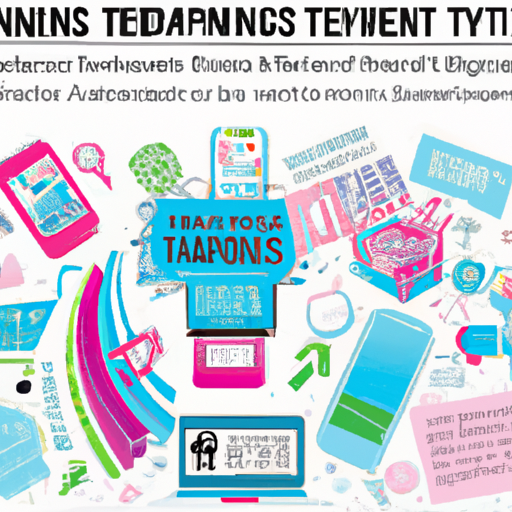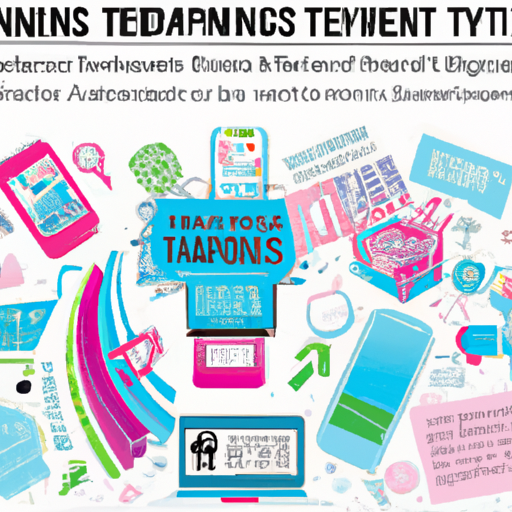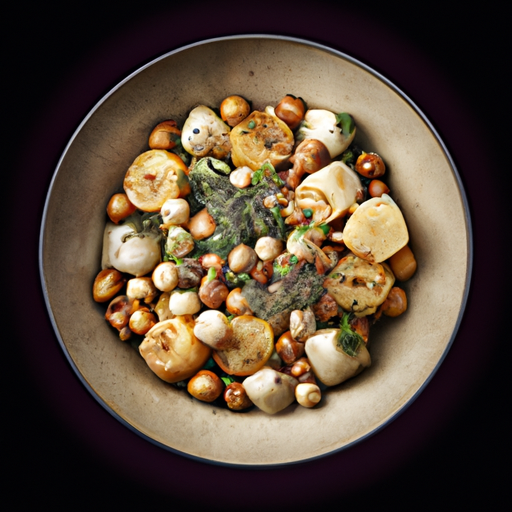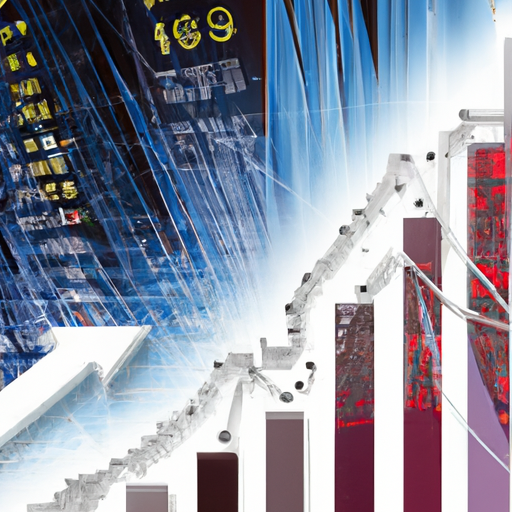Consumer Goods Trends
In this article, you will explore the ever-evolving world of consumer goods trends. From the latest innovations and technological advancements to changing consumer preferences, we will delve into the fascinating landscape of the consumer goods industry. Discover how businesses are adapting to meet the demands of the modern consumer and gain insight into the next big trends shaping the market. Whether you’re a business owner looking to stay ahead of the curve or simply curious about the latest products and innovations, this article is your guide to all things consumer goods trends.

Table of Contents
H2 heading 1: Current Trends in Consumer Goods
H3 subheading 1.1: Eco-conscious Products on the Rise
In recent years, there has been a significant shift in consumer preferences towards eco-conscious products. People are becoming more aware of the environmental impact of their purchases and are actively seeking out goods that are sustainable, recyclable, and made from ethically-sourced materials. From eco-friendly cleaning supplies to organic food and clothing, the demand for such products has been steadily increasing. As a consumer, this trend presents you with the opportunity to make more environmentally-friendly choices and contribute to a greener future.
H3 subheading 1.2: Personalization and Customization
Another notable trend in consumer goods is the rise of personalization and customization. Companies are now offering products that can be tailored to meet individual preferences, allowing consumers to have a unique and personalized experience. Whether it’s customizing a smartphone case, designing your own sneakers, or creating a personalized skincare regimen, the ability to create something that reflects your individuality is becoming more widespread. This trend not only enhances the consumer experience but also creates a sense of ownership and exclusivity.
H3 subheading 1.3: Digital Transformation in Shopping
The advent of technology has revolutionized the way we shop. Online shopping has become increasingly popular, with more and more people opting for the convenience of purchasing goods from the comfort of their own homes. E-commerce giants like Amazon and Alibaba have dominated the market, offering a wide range of products and speedy delivery services. Additionally, the rise of mobile apps and social media platforms has made shopping more accessible than ever before. Now, you can browse and purchase goods with just a few taps on your smartphone. The digital transformation in shopping has not only made it more convenient but has also opened up new avenues for personalized recommendations and targeted advertisements tailored to your interests.
H2 heading 2: Changing Consumer Preferences
H3 subheading 2.1: Health and Wellness
One of the significant shifts in consumer preferences can be seen in the increased focus on health and wellness. There has been a surge in demand for organic, natural, and functional foods and beverages. Consumers are more inclined towards products that offer health benefits like immunity-boosting ingredients, plant-based alternatives, and nutritional supplements. The desire to lead a healthy lifestyle has sparked a culture of fitness and wellness, leading to the popularity of fitness trackers, home exercise equipment, and athleisure wear. As a consumer, embracing this trend means making informed choices that prioritize your health and well-being.
H3 subheading 2.2: Ethical and Sustainable Practices
Consumers today are more conscious of the ethical and sustainable practices employed by companies. They are actively seeking products that are produced in socially responsible ways, supporting fair trade, and promoting ethical labor practices. With the growing awareness of the negative impact of fast fashion and single-use plastics, consumers are opting for sustainable alternatives like recycled and upcycled products. This trend encourages companies to adopt greener practices, reducing waste, and implementing transparency in their supply chains. By supporting brands that prioritize ethical and sustainable practices, you can contribute to a more socially responsible and environmentally friendly world.
H3 subheading 2.3: Digital Engagement and Influencer Culture
The rise of social media platforms has given birth to a new era of influencers and digital engagement. Consumers are increasingly relying on peer recommendations and influencer opinions before making a purchase decision. Influencers, through their online presence, provide valuable insights into the quality and usability of products. As a consumer, you have the power to learn from their experiences and make more informed choices. Brands are also leveraging this trend by partnering with influencers to promote their products, ensuring maximum visibility and reach. Digital engagement has created a more interactive shopping experience, where consumers can directly engage with brands and provide feedback, leading to improved products and services.
H2 heading 3: Innovative Technologies in Consumer Goods
H3 subheading 3.1: Internet of Things (IoT) and Smart Devices
The Internet of Things (IoT) has transformed the consumer goods industry, enabling connectivity and interactivity like never before. Smart devices, such as smart homes, wearables, and connected appliances, have become increasingly prevalent in households. From voice-controlled virtual assistants to smart refrigerators that can monitor and reorder groceries, these innovations have made our lives easier and more efficient. As a consumer, you can embrace this technology by incorporating smart devices into your daily routine, enhancing convenience, and optimizing energy consumption.
H3 subheading 3.2: Augmented Reality (AR) and Virtual Reality (VR)
The integration of augmented reality (AR) and virtual reality (VR) into consumer goods has revolutionized the way we experience products. AR and VR technologies allow consumers to virtually try on clothes, visualize furniture in their homes before purchase, and even experience virtual travel. This immersive experience enhances the shopping process, providing a unique and interactive way to explore products. As a consumer, you can take advantage of this technology to make more confident purchase decisions, eliminating the need for guesswork and enhancing your overall shopping experience.
H3 subheading 3.3: Artificial Intelligence (AI) and Machine Learning
Artificial intelligence (AI) and machine learning are playing an increasingly prominent role in consumer goods. From AI-powered chatbots that provide customer support to personalized product recommendations based on browsing habits, these technologies are transforming the way companies interact with their customers. AI and machine learning algorithms analyze vast amounts of data to understand consumer preferences and behavior, enabling companies to tailor their offerings to individual needs. As a consumer, you benefit from this technology through personalized recommendations and targeted promotions that align with your interests, enhancing your overall shopping experience.
H2 heading 4: The Future of Consumer Goods
H3 subheading 4.1: Sustainability as the Norm
Moving forward, sustainability will continue to be a dominant trend in consumer goods. As awareness of environmental issues grows, consumers will demand more sustainable options, eventually making sustainability the norm rather than the exception. Companies will be under pressure to adopt greener practices, reduce waste, and ensure transparency in their supply chains. From packaging innovations to the development of eco-friendly materials, the future of consumer goods lies in creating a more sustainable and environmentally friendly world.
H3 subheading 4.2: Hyper-personalization
The future of consumer goods will see an even greater emphasis on hyper-personalization. With advancements in technology, companies will be able to gather more extensive and more accurate data about consumer preferences and behaviors. This data will be used to create highly personalized experiences, tailored to individual tastes and needs. From personalized product recommendations to customized packaging, consumer goods will be designed to cater to the unique preferences of each individual. As a consumer, you can expect products and services that are tailored precisely to your liking, offering a truly personalized experience.
H3 subheading 4.3: Enhanced Connectivity and Integration
The future of consumer goods will be characterized by enhanced connectivity and integration. As the Internet of Things (IoT) continues to evolve, everyday products will become more interconnected, creating a seamless and integrated experience. For example, your smart home system will communicate with your smart appliances, allowing for more efficient and automated processes. Additionally, the integration of AI and machine learning will enable devices to learn from your habits and preferences, further enhancing convenience and personalization. The future will see a world where consumer goods work harmoniously together, simplifying our lives and providing a more connected experience.
As a consumer, it is essential to stay updated on the latest trends and innovations in consumer goods. By understanding these trends, you can make informed choices that align with your values and preferences. Whether it’s embracing eco-conscious products, supporting ethical and sustainable practices, or taking advantage of innovative technologies, the consumer goods industry offers a vast array of options for you to explore. So go ahead, embrace the trends, and let your consumer choices reflect your individuality, values, and aspirations.






